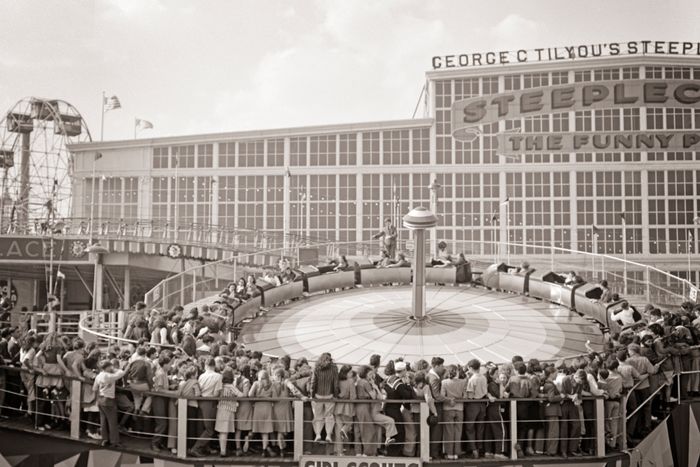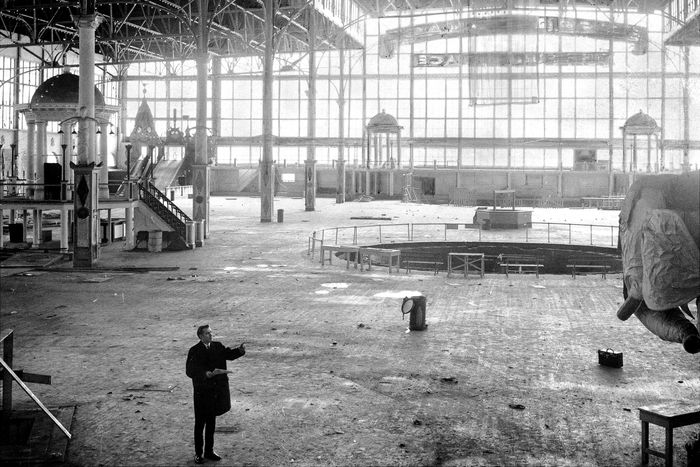Photo: Eric Lee/Getty Images
The East Wing of the White House is gone, and it went quickly. In July, President Donald Trump announced that a ballroom would rise somewhere on the White House grounds and “be near it but not touching it.” The plans, or at least the public ones, are vague and incomplete; nothing’s been submitted to, let alone approved by, the National Capital Planning Commission, which in normal times would judge them. Yesterday, though, demolition crews took most of the wing down, leaving nothing but an outline, while Trump, essentially simultaneously, announced it would have to go. (No word about how this all affects the bomb shelter below the site.) Why do the demo now, with no final plans in place? The site will sit empty for at least a few months if not years while they fine-tune the replacement; surely they could have kept the offices there for another year or two?
What Trump employed here is a classic developer tactic: anticipatory demolition. Once you buy a building that’s in the way of your plan (“you” being the developer here), you knock it down right away, lest the neighbors rally behind saving it. Why wait for the activists holding protest signs or the negative press (including, maybe, on this site) demanding, “Don’t tear that down”? A headache! Even the humblest of structures can sometimes be discovered to have historical import, and God help you if some enthusiast manages to get it “calendared” — that is, under consideration for permanent landmarking — by the Landmarks Preservation Commission. Once that happens, you’re probably stuck with it for all time.
Trump himself has done that, as we know from one widely covered story. When Trump Tower went up, it replaced a handsome 1929 Bonwit Teller department store. He’d initially promised its Art Deco bas-reliefs and entryway grille to the Metropolitan Museum of Art. Then he discovered that removing them with care would cause delays and cost a few hundred thousand dollars, and the jackhammers came out soon after. It made the front page of the New York Times, and he’s still getting criticism for it, but it solved two problems for him: It streamlined construction, and it finished off the preservationists. You can’t un-destroy a heap of limestone crumbs, and he probably enjoyed their tears. It was trolling before we had that word.
He’s not even the first Trump to do it. In 1965, just weeks before the Landmarks Preservation Commission came into being, Fred Trump, the president’s father, bought the recently closed Steeplechase Park on the Coney Island waterfront. It was a big barn of a building dating to 1907, a playland that looked like an immense greenhouse with industrial overtones, known as the Pavilion of Fun. It perhaps would have been an uphill climb to landmark such a place back then — preservationists tended to focus on prettiness rather than brawn — but it was a possibility, and Fred Trump knew it. On September 21, 1966, he held a party, or rather a showy wake, for Steeplechase Park. The Times reported that there were “food, drink, and six — count ’em — six bikinied beauties,” who posed for photos in a bulldozer scoop and toasted the destruction with Champagne. Each guest was invited to hurl a brick through the windows — a dandy way of trolling the libs. A few weeks later, the shattered façade appeared on the cover of the New York World Journal Tribune’s Sunday magazine, the immediate ancestor of the media outlet you’re reading now. The building was gone by January. Trump never built a thing there, and the site sat vacant for decades after he sold it off a few years later. The Cyclones’ ballpark, completed in 2001, is there now.
Steeplechase Park’s Pavilion of Fun in 1940, pre-demolition.
Photo: Charles Phelps Cushing/ClassicStock/Getty Images
Fred Trump stands inside in 1966, just before he knocked it down, a step ahead of the preservationists.
Photo: Leroy Jakob/NY Daily News Archive/Getty Images
Even if you set aside the Trumps, it happens plenty. The Dangler mansion in Brooklyn came down moments ahead of a Landmarks ruling. The McGraw-Hill building’s fabulous Deco lobby was ripped out a week or so after we reported on the push to save it. Nearly four years and a foreclosure proceeding later, it’s still boarded up. The late Christopher Gray once wrote about the anticipatory destruction of the Cherokee Club, a sweet building from 1890 that was taken down in the late 1970s. There, the demolition was not complete — the owner just peeled off everything inherently preservable about the building, after which there was nothing to fight over. (Gray called it “predemolition.”) Another method is simply letting a building rot until it becomes a hazard and needs to be removed, a technique that has doomed many buildings, among them 451 Convent Avenue in Harlem. That’s so common that it has a name and a Wikipedia page: “Demolition by neglect.”
In short, we’ve seen this move before, and it’s a filthy one. But it’s never happened in public life, and definitely not at the highest level of public office, because every previous resident of the White House has been able, at least to a degree, to separate the office of the presidency from his immediate (and long-term) desires. Trump cannot, and his latest victim is the East Wing. It happened fast, without a hint of notice, a dramatic symbol of this administration’s taste for crushing anyone or anything that stands in its way into gravel.



